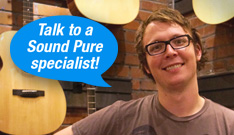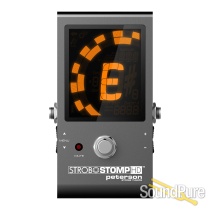
Peterson Strobe Tuners
The Peterson Companyýs colorful history, spanning nearly sixty years, reflects a deep commitment to innovation as well as excellence in design, manufacturing, and customer service. This article gives a glimpse into the life of prolific inventor Richard H. Peterson and the accomplishments to date of the company he founded. In 1925, Richard Peterson was born in Chicago, the younger of two sons of a retail coal dealer. Even as a young boy, he was fascinated by the pipe organ at the church his family attended. In the 1930s, Richard developed a keen interest in radios, vacuum tube circuits, and mechanical devices of all types. Curiosity often drove him to dismantle his familyýs new ... (view more)
Peterson Strobe Tuners - The Peterson Companyýs colorful history, spanning nearly sixty years, reflects a deep commitment to innovation as well as excellence in design, manufacturing, and customer service. This article gives a glimpse into the life of prolific inventor Richard H. Peterson and the accomplishments to date of the company he founded. In 1925, Richard Peterson was born in Chicago, the younger of two sons of a retail coal dealer. Even as a young boy, he was fascinated by the pipe organ at the church his family attended. In the 1930s, Richard developed a keen interest in radios, vacuum tube circuits, and mechanical devices of all types. Curiosity often drove him to dismantle his familyýs new purchases to see how they worked. Later, at the tail end of WWII, Peterson served in the U.S. Army as a radio operator. While stationed in New York City, he often visited Radio City Music Hall and was thrilled with the pipe organ there. Soon he decided that his lifeýs work would involve inventing better ways to build organs. Determined to find ways to match the thrill of a real pipe organýs sound using electronics, Richard Peterson co-founded the Haygren Organ Company and set out to build church organs that were superior to other electronic organs of the day. Peterson was the first to employ the concept of using a large number of independent oscillators to produce a genuine ensemble in electronic organs. Careful attention was given to realistic attack and decay of each note and the independence of each note from others. The Haygren Organ Company would ultimately build fifty church organs in an unused part of Richardýs fatherýs coal facility. In 1951, Dick Peterson met Don Leslie, creator of the renowned Leslie Speaker, who would become a lifelong friend and informally a partner in many inventions, including the "Wah-wah" pedal. Both men shared a fascination for understanding why real pipe organs sound better than electronic organs. The picture to the left (courtesy of Harvey Olsen) is of Don & Carolyn Leslie in front of the organ that was built at the Peterson factory for Don. Soon, a relationship was established with the Gulbransen Piano Company of Chicago, leading to an arrangement in which Petersonýs inventions would be licensed to Gulbransen for use in making home electronic organs. In 1957, Richard Peterson completed development of the worldýs first transistor organ, which would be marketed by Gulbransen and help secure that companyýs position as a technical leader in the organ field. Meanwhile, in the mid 1950s, the earliest Peterson tuners, called models 150 and 200, were marketed after being developed for Richardýs own use for tuning organs. These were the first products to carry the Peterson name. Many of these early Peterson tuners are still in use today! In 1964, the tuner product line was further expanded with the introduction of the Model 70, the first commercially available, hand-held, battery operated tuner. That same year, a brand new 3000 square foot building was built on 2.5 acres in the Chicago suburb of Alsip, IL to house the growing Peterson company and establish greater financial stability. (view less)









